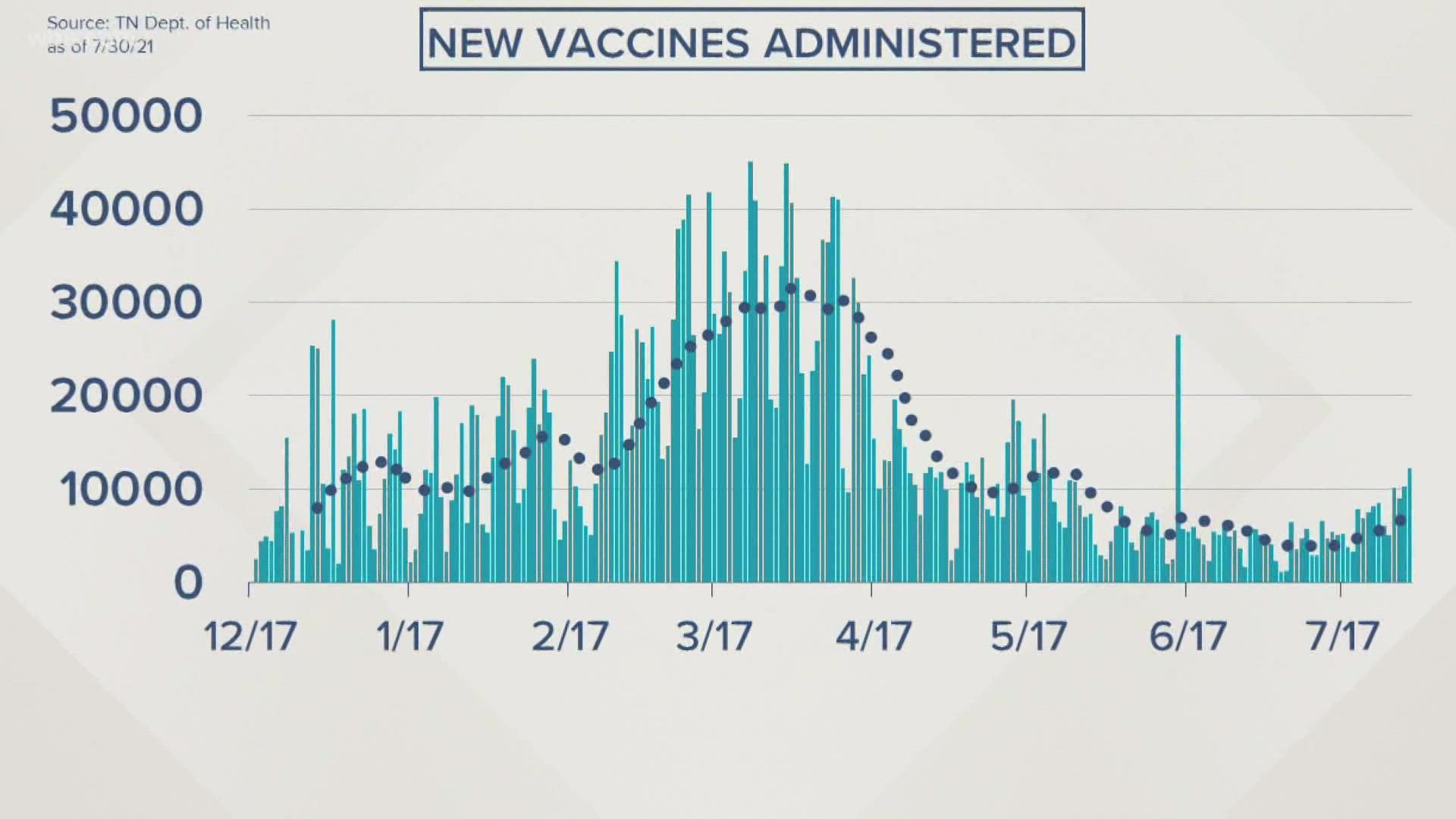The number of Tennesseans getting a COVID-19 shot jumped significantly in the last week, but the virus is continuing to infect people in the state at a sharp rate with no signs of hitting a plateau, the state's health commissioner said Monday.
The simplest way to halt the latest surge across Tennessee is to get a vaccine, Dr. Lisa Piercey told reporters Monday. Most people -- 93 percent -- who are getting sick have never had the vaccine, she said.
There are several shot options and they're all free and widely available in the state.
"Vaccinations are the single greatest tool we have to prevent COVID-19 in ourselves and in our communities," Piercey said.
No part of the state is immune to the rising virus rate -- more than 200 percent in the last week. It's driven largely by the so-called delta variant, she said.
The rate is continuing to climb. Piercey said she'd like to see signs at least that growth is plateauing, but that's not happening yet.
Another sign that the virus isn't going away: Hospitalizations are increasing in Tennessee. Piercey reminded reporters of the jump the state saw in December, January and February.
Tennessee is back to having more than a thousand people in the hospital because of COVID, she said.
"Our level is now at about where we were in February," she said.
Hospitals have the space to treat people, she said. But they are having staffing problems, which is creating greater problems for those who are on the job.
The pediatrician said, however, that she was encouraged to see the number of vaccinations going up from 62,000 in one week last month to 76,000 in the most recent week.
All but one of the state's counties has seen an acceleration in vaccine intake, she said.
If you're "on the fence" at all about getting a shot, Piercey said, seek out someone you trust and get their opinion.
When asked about infections among those in nursing homes and long-term care facilities, Piercey noted residents themselves are widely vaccinated and not getting sick.
But she said the sickness rate for employees of nursing homes and long-term care facilities is concerning, as is the vaccination rate of those employees.
The rate is "marginally higher" than the general population, which is 39 percent fully vaccinated or 2.67 million, but remains at most at about 50 percent, she said.
"I wish that were different," Piercey said.
The doctor noted residents inside nursing homes and long-term care facilities are among the most vulnerable populations, making it even more important to ensure they face no threats from the staff.
"Staff has opportunities to get the vaccine," she said. "They just need to do it."



